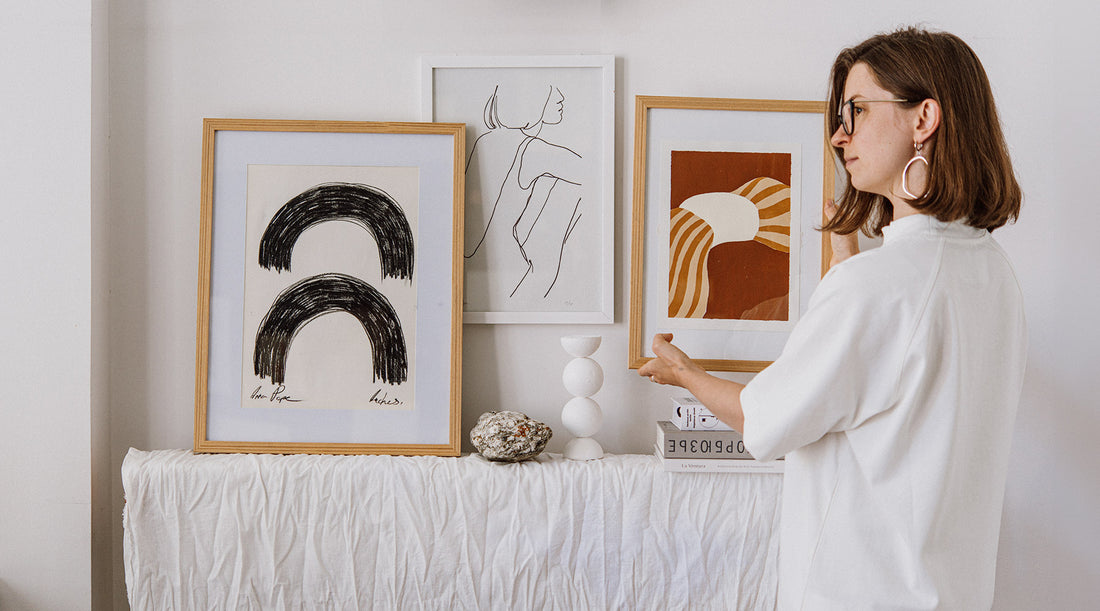Artwork adds such a life and visual interest to a space. Picking the right frame to improve the work is additionally important for your room or workspace. To frame art means to mount it inside a cover, mostly behind glass. Framing artwork, prints, photos, or other work can shield the art from dust, water, scratches, or UV rays. Frames can build the worth and improve the artwork, making it look more professional and compelling.

Framing your artwork is the first stage whenever you've tracked down the ideal print, painting, or photo. I've assembled this guide to help you through so you can settle on the right decision for your space.
Step 1: Find your inspiration & start planning!
The most effective way to get art inspiration is to check out other art! Visit exhibition halls, Museums, and displays, pack your online media with artists, and fill your home with art books. Invest some time to concentrate on artworks and notice what might move you. Focus on anything that gets your attention, regardless of whether you know how it could fit into your space. You can also take pictures, save posts and stories, and gather them to choose the best one. That could be a Pinterest board, a folder on your phone, or an online bookmark! After selecting

Step 2: Buying the art!
Buying art can not be easy, particularly, if you are new to it. Art gathering is a side interest for some and a venture for other people. But, the affection and energy for art are generally something very similar. Before buying art, you need to know what you are looking for, find potential artists and contact them right away. You can find promising artists and their works on:
- Instagram and Pinterest
- Art Residencies and reviews
- Artists Grants or Awards
- Degree Shows
- Little art exhibitions
- Online Art Platforms/Galleries
A financial plan is one more essential component to consider before going to the hunt of art to buy. Eventually, you know better what you can bear. You can buy a computerized download document and print it yourself, which is the least demanding and most inexpensive way.

There are plenty of decisions out there while choosing how to frame your art, so here are some essential guidelines to assist with helping you through your new framing concern:
Step 3: Picking the Frame:
The frame should match the style of the picture and the setup of your space. Your art is the star here, not the frame; it should upgrade your art, not overpower it. Pick a color and style that beautifies the artwork or makes a particular color more vibrant. If you need the art to be the center of concentration, get a frame that matches the color of your wall.
Step 4: Picking a Mat:
The reason for the mat is to isolate the art from the glass, which permits the wind stream between the two and keeps them from getting together. It also gives a visual space to your artwork and brings a contrast between the wall and your art. Similarly, as in framing, the mat ought not to be contrasting with the work. A rule of thumb format selection is that; it should be lighter than the art yet darker than the wall. I prefer to install a 100 percent cotton mat in white.

Step 5: Picking the Glass:
Humidity and light are artworks' worst nightmares, so while picking glass for your piece, various essential points are to be kept in mind, relying upon how concerned you are.
- Clear photo placement glass is generally used and is the most economical method. If it's a cheap inkjet print, this is most likely a fine choice to select.
- Next is non-glare glass, which is somewhat more expensive and is utilized in regions that can influence seeing the artwork (high glare regions).
- Finally, there is UV separating glass, which is the expensive one and comes in clear or non-glare. That is the best glass and is utilized for costly artwork and authentic framing.
- Another choice is to leave the glass altogether and go with Plexi. You can get it with a UV-protectant covering, and it is also accessible in non-glare.
Note: Use Acid-Free Materials: If you are framing something of an individual or worthy, you need to make it safe. Materials containing acid will ultimately yellow, crumble and "finish" your artwork. To keep this from happening, you can choose to get a better mat that doesn't contain such material. An expertly framed artwork framing doesn't have acid-containing materials.

